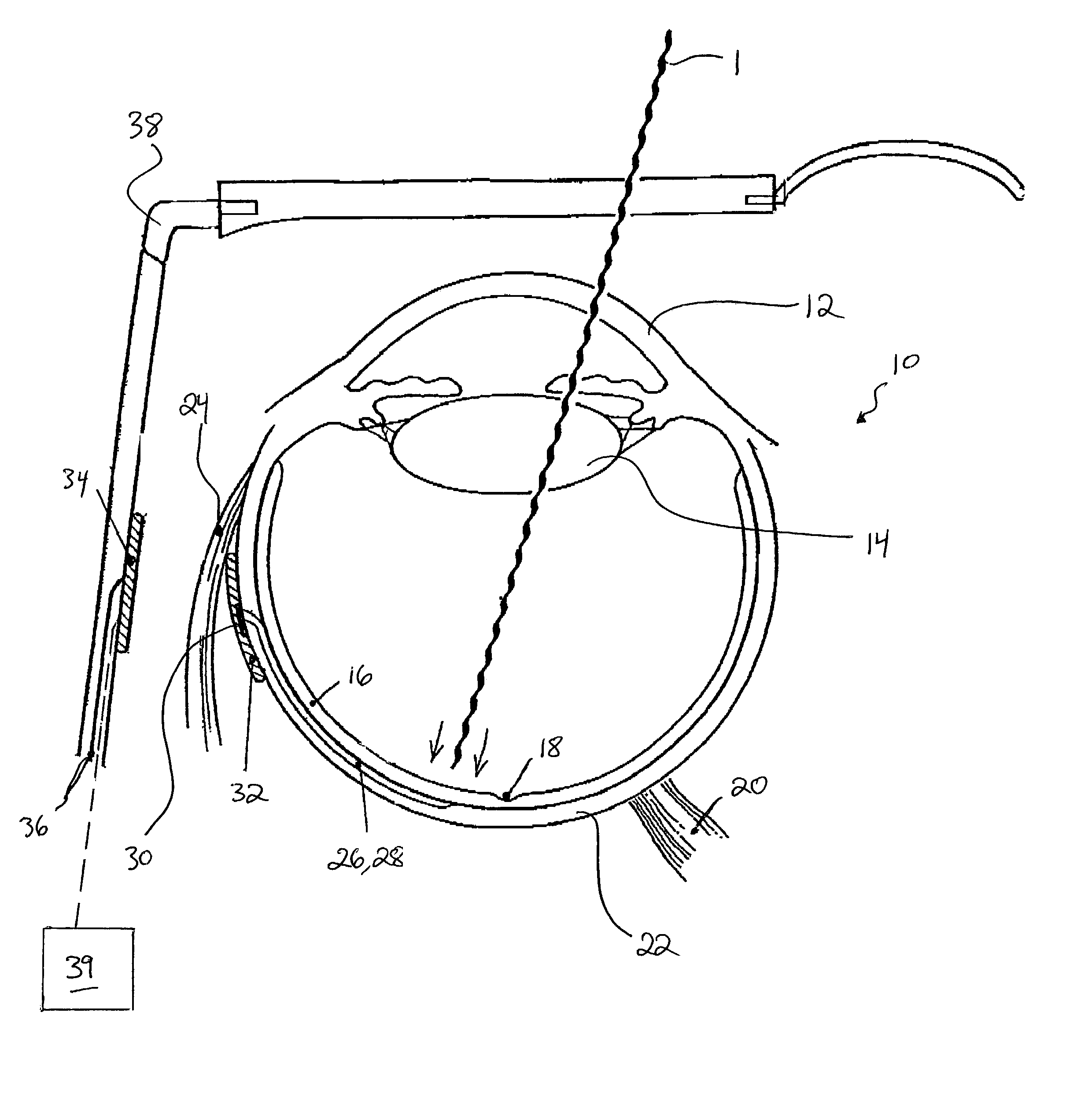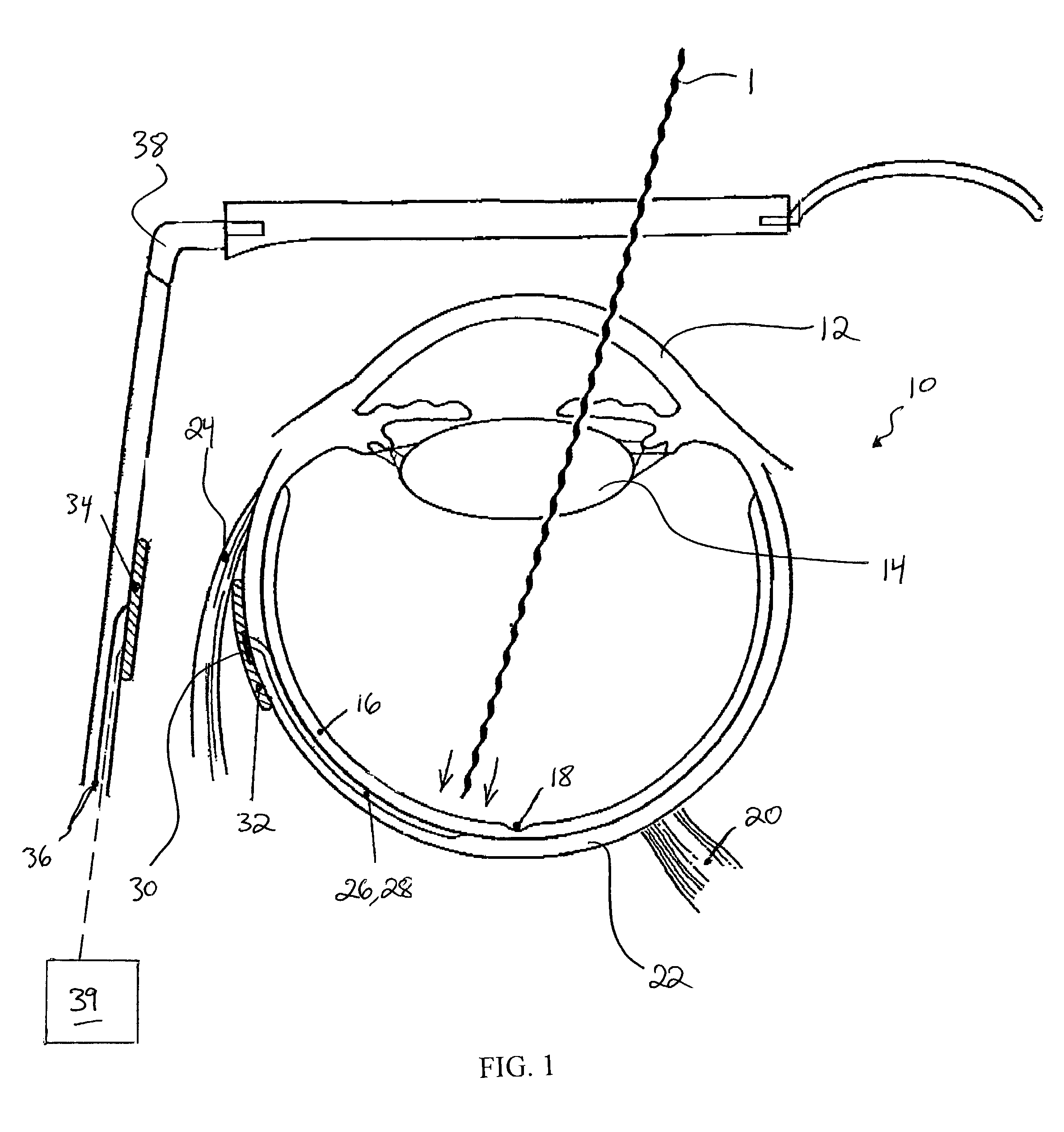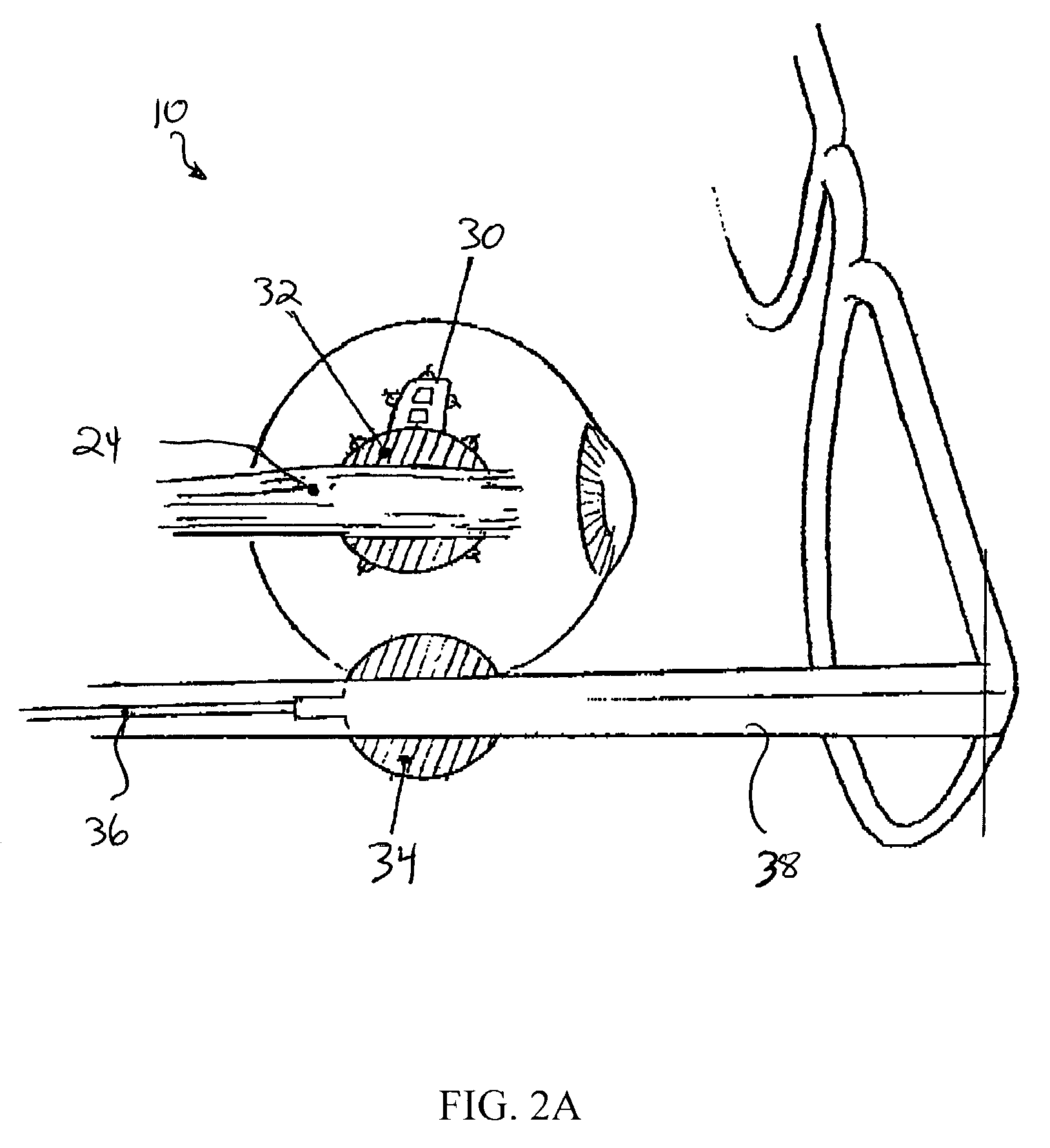Minimally invasive retinal prosthesis
- Summary
- Abstract
- Description
- Claims
- Application Information
AI Technical Summary
Benefits of technology
Problems solved by technology
Method used
Image
Examples
Embodiment Construction
[0028]A retinal prosthesis is disclosed that is designed to emulate the natural workings of the eye (for instance, by using natural light entering the eye to trigger the spatial pattern of nerve stimulation) while also enhancing the biocompatibility (16, 27, 70, 103) of the device by virtue of its low profile, flexible configuration, and implantation almost entirely outside of the eye. The eye is especially prone to inflammation, which over time can be destructive and, in the worse cases, can cause loss of the eyeball. In a preferred embodiment, the present invention utilizes materials and a structure that minimizes the potential for ocular damage. In particular, this present invention seeks to alter the normal anatomy of the eye as little as possible and to remove potentially harmful mechanical and thermal (43, 87) stress from the retina, which is the most delicate element of the eye.
[0029]Enhanced biocompatibility is achieved by placing almost the entire retinal prosthesis outside...
PUM
 Login to View More
Login to View More Abstract
Description
Claims
Application Information
 Login to View More
Login to View More - R&D
- Intellectual Property
- Life Sciences
- Materials
- Tech Scout
- Unparalleled Data Quality
- Higher Quality Content
- 60% Fewer Hallucinations
Browse by: Latest US Patents, China's latest patents, Technical Efficacy Thesaurus, Application Domain, Technology Topic, Popular Technical Reports.
© 2025 PatSnap. All rights reserved.Legal|Privacy policy|Modern Slavery Act Transparency Statement|Sitemap|About US| Contact US: help@patsnap.com



